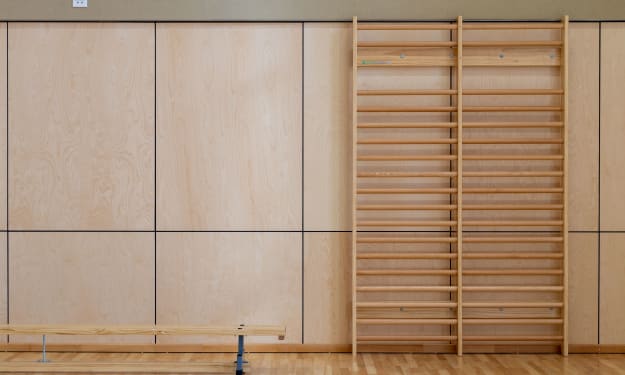
Which Is Stronger: MDF or Plywood?
When it comes to choosing the right material for your woodworking or construction project, the strength and durability of the material are often among the top considerations. Two popular choices for such projects are Medium Density Fiberboard (MDF) and Plywood. Both materials have their unique characteristics and strengths, but which one is stronger? To answer that question, we need to delve into the properties, composition, and applications of MDF and plywood.
Understanding MDF (Medium Density Fiberboard):
Medium Density Fiberboard, or MDF, is a composite wood product that is made from wood fibers, wax, and resin. These components are combined under high pressure and heat to create a dense, uniform sheet of material. MDF is known for its smooth and consistent surface, making it a popular choice for furniture and cabinet making, as well as for various interior applications.
Strengths of MDF:
Uniformity: One of the notable strengths of MDF is its uniform density and composition. Unlike natural wood, which can have knots, voids, and imperfections, MDF provides a consistent surface and thickness throughout the sheet. This uniformity makes it easier to work with and results in a smooth finish.
Easy Machinability: MDF is relatively easy to cut, shape, and machine. It is less prone to splintering than plywood, making it an ideal choice for intricate designs and detailed work.
Affordability: MDF is generally more affordable than plywood, which can make it an attractive option for budget-conscious projects.
However, MDF does have some limitations when it comes to strength and durability:
Moisture Sensitivity: MDF is highly susceptible to moisture and should not be used in applications where it may be exposed to water or high humidity. When wet, MDF can swell and lose its structural integrity.
Limited Load-Bearing Capacity: While MDF is strong enough for most indoor furniture and cabinetry, it may not be suitable for applications that require significant load-bearing capacity, such as constructing structural components in a building.
Understanding Plywood:
Plywood is another engineered wood product, but it differs from MDF in terms of composition. Plywood is made from thin sheets of wood veneer that are layered and glued together with the grain direction of each layer perpendicular to the adjacent one. This layering technique gives plywood its distinctive strength and stability.
Strengths of Plywood:
Strength and Structural Integrity: Plywood is well-regarded for its structural strength and ability to withstand heavy loads. The cross-grain construction distributes forces evenly, providing excellent stability and resistance to warping or bending.
Moisture Resistance: Compared to MDF, plywood has better moisture resistance. It can withstand moderate exposure to moisture without losing its structural integrity, making it suitable for both indoor and outdoor applications when properly treated.
Versatility: Plywood is highly versatile and can be used in a wide range of applications, including construction, flooring, roofing, and sheathing. It is available in various grades and thicknesses to suit different needs.
Edge Strength: Plywood's layered construction gives it strong edge support, which is advantageous when making furniture or cabinets with exposed edges.

However, plywood also has its own set of considerations:
Surface Appearance: Plywood may not have the same smooth and uniform surface as MDF, which can affect its appearance in some applications. Some grades of plywood have visible wood grain and knots, which may or may not be desirable depending on the project.
Cost Variability: The cost of plywood can vary significantly based on the type of wood used, grade, and thickness. High-quality plywood can be more expensive than MDF.
Strength Comparison: MDF vs. Plywood
When it comes to sheer strength and load-bearing capacity, plywood generally outperforms MDF. The layered construction of plywood provides it with superior structural integrity, making it the preferred choice for applications where strength is a critical factor. Plywood's cross-grain configuration disperses stress more effectively than MDF, reducing the risk of warping, sagging, or breaking under heavy loads.
In contrast, MDF is better suited for applications where strength is not the primary concern. Its uniformity and smooth surface make it excellent for interior detailing, cabinetry, and furniture, but it may not be the best choice for applications requiring high strength, such as structural framing in construction.
Applications and Use Cases:
To determine which material is stronger, it's essential to consider the specific application and requirements of your project:
MDF is Suitable for:
Furniture: MDF is commonly used for crafting indoor furniture, cabinets, and shelving units where a smooth and consistent finish is desired.
Interior Trim: MDF can be used for molding, trim, and decorative paneling in homes and commercial spaces.
Cabinet Doors: Due to its machinability, MDF is often used to create intricate cabinet door designs.
Plywood is Suitable for:
Construction: Plywood is a preferred choice for sheathing, subflooring, and roofing in construction due to its strength and moisture resistance.
Outdoor Applications: Plywood with proper treatment can be used for outdoor structures like decks and fences.
Structural Elements: Plywood is used in building structural elements such as beams, columns, and joists, where load-bearing capacity is crucial.
Marine Applications: Marine-grade plywood, specifically designed to withstand moisture, is used in boat construction and other marine applications.
Conclusion:
In the battle of MDF vs. Plywood in terms of strength, plywood comes out as the stronger contender. Its layered construction and cross-grain configuration give it superior structural integrity and load-bearing capacity compared to MDF. Plywood's ability to handle moisture also makes it suitable for a wider range of applications, including outdoor use.





Comments
There are no comments for this story
Be the first to respond and start the conversation.